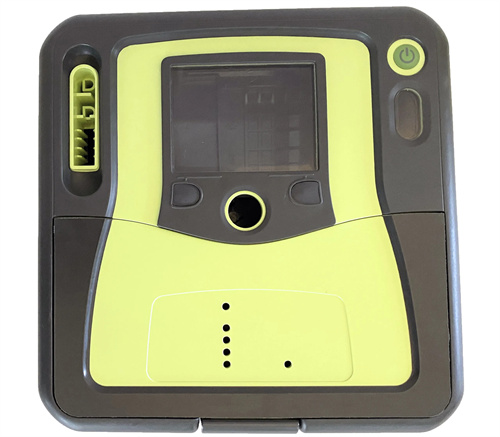Injection molding color difference and solution
Injection molding color variation refers to the difference between the color of a plastic part and a standard color palette, including deviations in hue, brightness, and saturation. It is one of the main defects affecting the appearance quality of plastic parts, especially in areas such as automotive exteriors and home appliance housings, where color consistency is critical, and color variation can cause entire batches of products to be scrapped. Color variation is essentially caused by uneven distribution of colorants in the plastic melt or chemical changes in the colorants during the molding process, resulting in different light reflectance characteristics in different parts of the plastic part or from different batches of products. For example, when producing white appliance panels, if the masterbatch is poorly dispersed, yellow spots will appear on the surface of the plastic part; high temperatures cause pigment decomposition, resulting in an overall grayish tint, with a color difference ΔE value exceeding 3 from standard white (the industry generally requires ΔE ≤ 1.5).

The main causes of color variation in injection molding require a systematic analysis of materials, equipment, and process. Regarding materials, poor compatibility between masterbatch and substrate leads to uneven dispersion, fluctuating masterbatch addition ratios (e.g., a target of 3% but actual variations between 2-4%), and unstable mixing ratios of recycled and virgin materials can all contribute to color variation. Equipment factors include residual discolored material in the barrel (e.g., due to incomplete color changes), screw wear leading to uneven plasticization, and leakage from check rings leading to poor melt mixing. Regarding process parameters, excessively high barrel temperatures can decompose pigments (e.g., organic red pigments decompose easily above 250°C), slow injection speeds can lead to insufficient masterbatch dispersion, and varying holding pressures can lead to varying part densities, affecting color depth. Environmental factors are also crucial, such as fluctuating workshop temperature and humidity, which can affect the hygroscopicity of masterbatch, and varying light sources, which can lead to visual misinterpretation of color variations.

The core solution for material control is to ensure a stable supply and uniform dispersion of colorants. Select masterbatches with good compatibility with the substrate, such as PP carrier masterbatches for PP substrates and ABS carrier masterbatches for ABS substrates, to avoid streaking color differences caused by poor compatibility. Strictly control the proportion of masterbatch addition, using an automatic metering feeder (accuracy ±0.1%) instead of manual weighing to ensure consistent addition for each batch. For small-batch production, premix the masterbatch with the substrate (mixing time ≥10 minutes) to improve initial dispersion uniformity. The proportion of recycled material used must be fixed (e.g., no more than 20%), and the recycled material must be screened, crushed, and dried to prevent impurities or moisture from affecting the color. If necessary, add an additional 0.5-1% masterbatch to the recycled material to compensate for pigment loss during the recycling process. For example, when a company produced black PC plastic parts, the proportion of recycled materials increased from 10% to 30% without adjusting the amount of masterbatch, resulting in the color difference ΔE value rising from 1.2 to 2.8. After adjusting the amount of masterbatch added, it returned to normal.

Equipment cleaning and maintenance are fundamental to eliminating color variations, with the emphasis on ensuring barrel cleanliness and uniform plasticization. Before color change production, the barrel must be thoroughly cleaned using a “step-by-step cleaning method”: first, use a high-flow cleaning compound (such as PE) at a high temperature (20-30°C higher than normal process) for 5-10 consecutive injections, followed by 3-5 cleaning cycles with production material until the discharge material achieves a uniform color. Regularly inspect the screw and barrel for wear. If the screw compression ratio drops by more than 10% (for example, from 3:1 to 2.7:1), replace the screw assembly to ensure plasticization capacity. Wear on the check ring and seal should be promptly replaced to prevent backflow of the melt and uneven mixing. For multi-color injection molding machines, check the metering accuracy of each cylinder to ensure a stable ratio of different color melts. Clean the nozzle and runner to prevent localized color variations caused by clogging with residual color material.

Process parameter optimization requires precise control based on pigment characteristics to avoid color variations caused by processing conditions. Set an appropriate barrel temperature based on the pigment’s heat resistance (e.g., inorganic pigments can withstand temperatures above 300°C, while organic pigments typically operate between 200-250°C). For example, when using phthalocyanine blue, maintain the barrel temperature between 230-250°C to avoid excessively high temperatures that can cause hue shifts. Increase the screw speed (within the allowable range) to enhance shear dispersion, such as increasing the speed from 80 rpm to 120 rpm. This will ensure more uniform dispersion of the masterbatch in the melt and reduce color speckling. However, be aware that excessively high speeds may cause localized overheating, so avoid excessively high speeds. Maintain stable process parameters, keeping fluctuations in parameters such as injection speed, holding pressure, and cooling time within ±5%. For example, fluctuations in holding pressure from 90 MPa to 70 MPa can result in part density variations and, consequently, color variations. Use a “constant volume injection” mode to control screw stroke to ensure consistent shot size each time, minimizing color variations caused by metering errors. For example, when producing red ABS plastic parts, the barrel temperature is stabilized at 220°C, the screw speed is 100rpm, and the holding pressure is 90MPa, so that the color difference ΔE value between batches is controlled within 0.8, which is far better than the customer’s requirement of 1.5.
